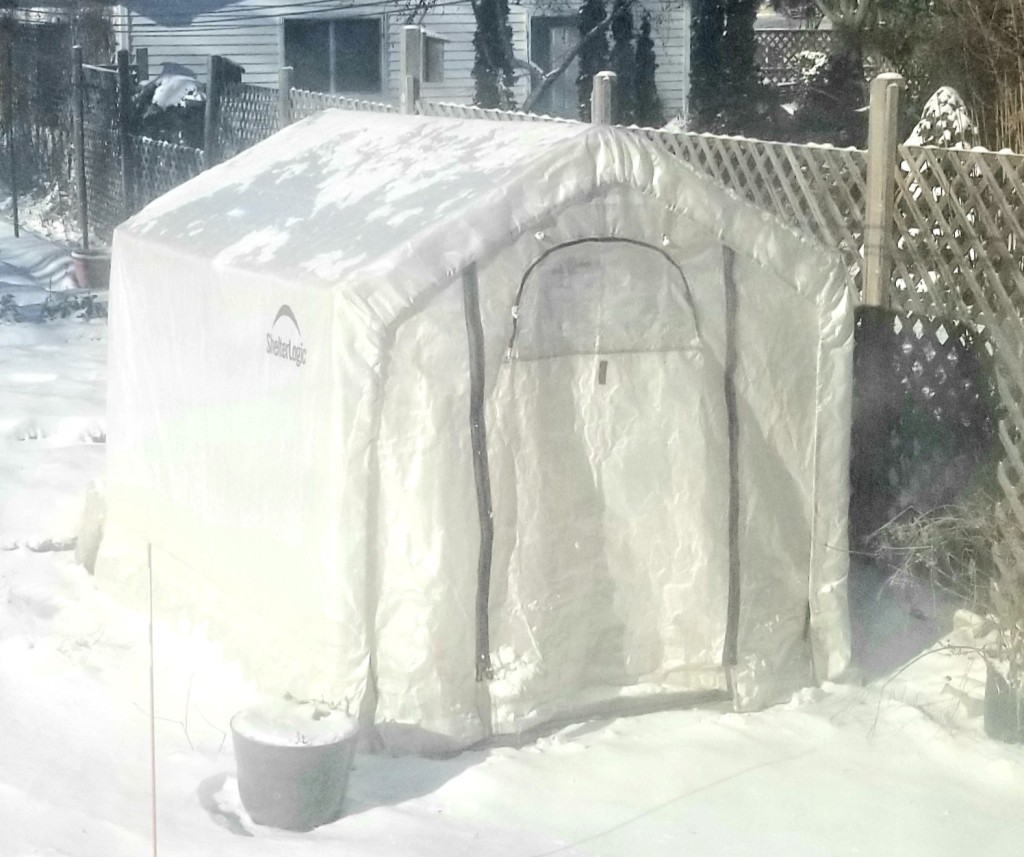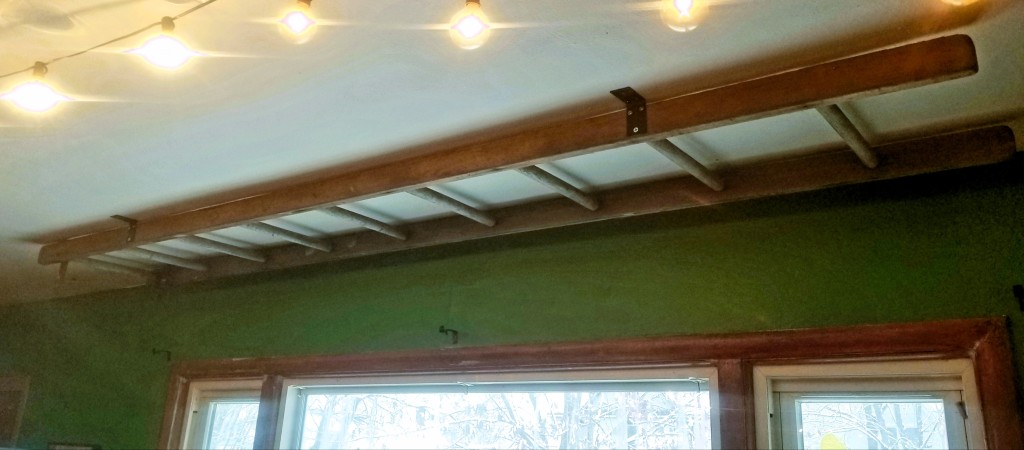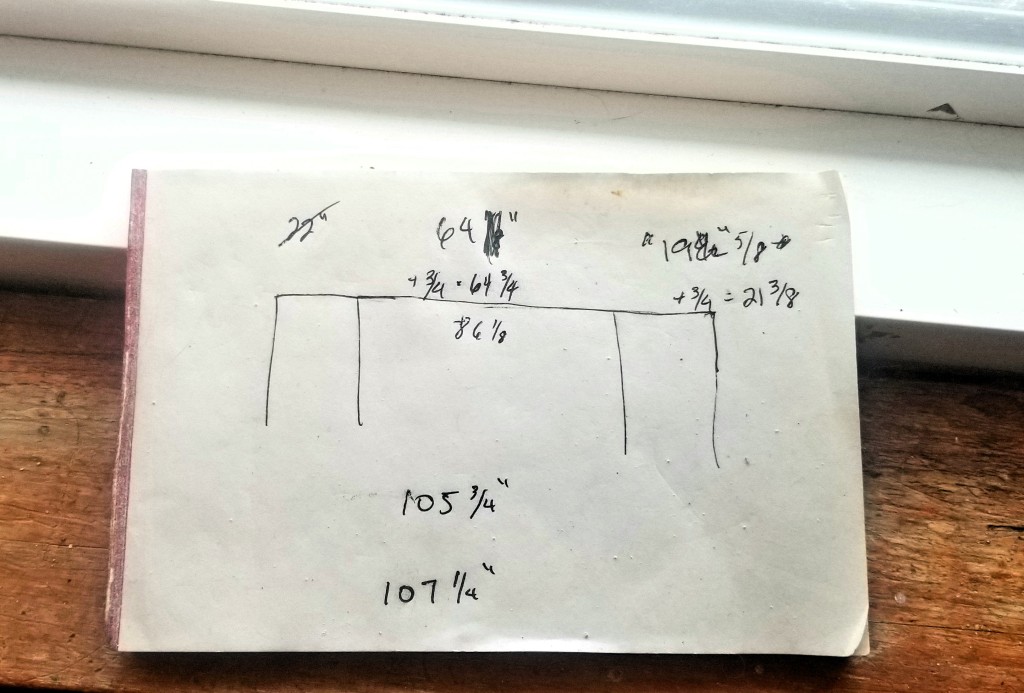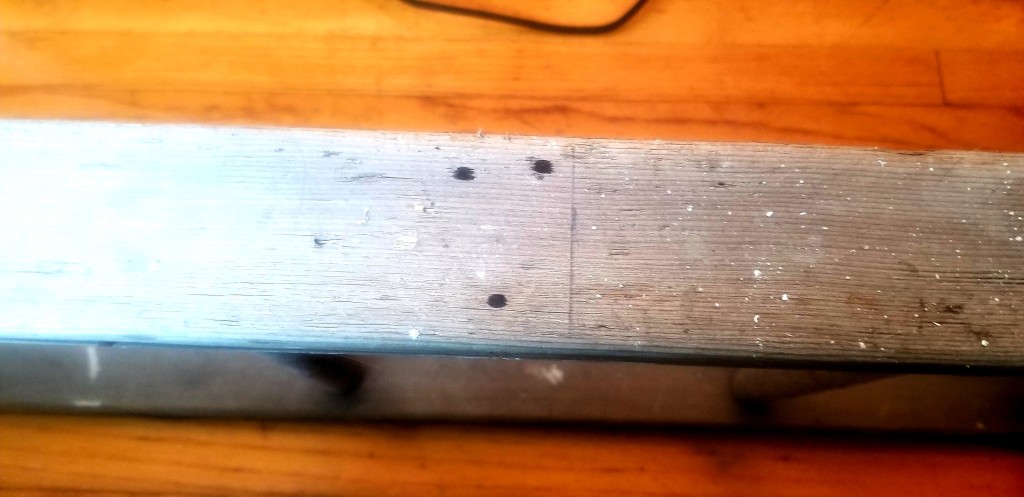We enhanced the greenhouse to be able to grow year-round. But how well does a wood and plastic wrapped metal structure actually do in the winter?

Well, winter arrived this week – and appears set to leave next week thankfully. Overnight temperatures reached what we’re calling negative stupid. The greenhouse, I’m happy to say, held up sufficiently.
For these colder months, when we want to capture as much heat as we can, the ventilation fans are unplugged and covered over with a double layer of the 10mil plastic we used. We want the heat to be absorbed as much as possible in the stone floor, the planting box, and the metal shelves. As it is, though, with these ridiculous temperatures, I’m not sure the heat hit the point where they would have come on anyway.
How hot does it get when it’s below zero outside? The sun is powerful. Even with a few clouds, it brings the greenhouse to comfortable temps. I generally remove my sweater or jacket the moment I enter it. By mid-morning, it’s approaching 70° and as long as the sun is out, it stays warm inside when it’s deathly cold outside.
Overnight, when the temps would make a polar bear happy, the heating setup kept it in the mid to upper 40s. I would have liked it to stay a little warmer, but at least nothing is going to freeze or die off on us. Though, I am wondering if a slightly larger heater would keep it warmer. The two I have are rated for a garage (main) and small rooms (backup). When the temp drops below 48°, the second kicks in to help.








Next year, because we appear to have made it through this year, I may install a larger main heater and reassign the garage one as the backup/supplemental unit. I also want to install a small solar kit to take over running them. Toward that end, I installed monitors to record how much power they are using so I know what size system to install. In the summer, we’ll use it to power the backyard lights, charge yard equipment batteries, etc.
Unfortunately, starting seeds has been a problem because of the cooler soil temperatures in the planting box. This is probably because we got a late start trying to grow winter crops, because we weren’t able to perform the enhancements until October due to the constraints of the budget and my recovery status. It was close to and shortly after Halloween, when we finally got anything started. By then, the overnight lows inside the structure cooled the soil down too much. Next year, we’ll be able to start earlier and start seeds on heating pads, if necessary.
As it is, we’re patting ourselves on the back because the enhancement has worked, if not quite as well as envisioned. These low overnight temps mean growth is slowed or paused. As long as nothing is killed off, though, we can live with that.









